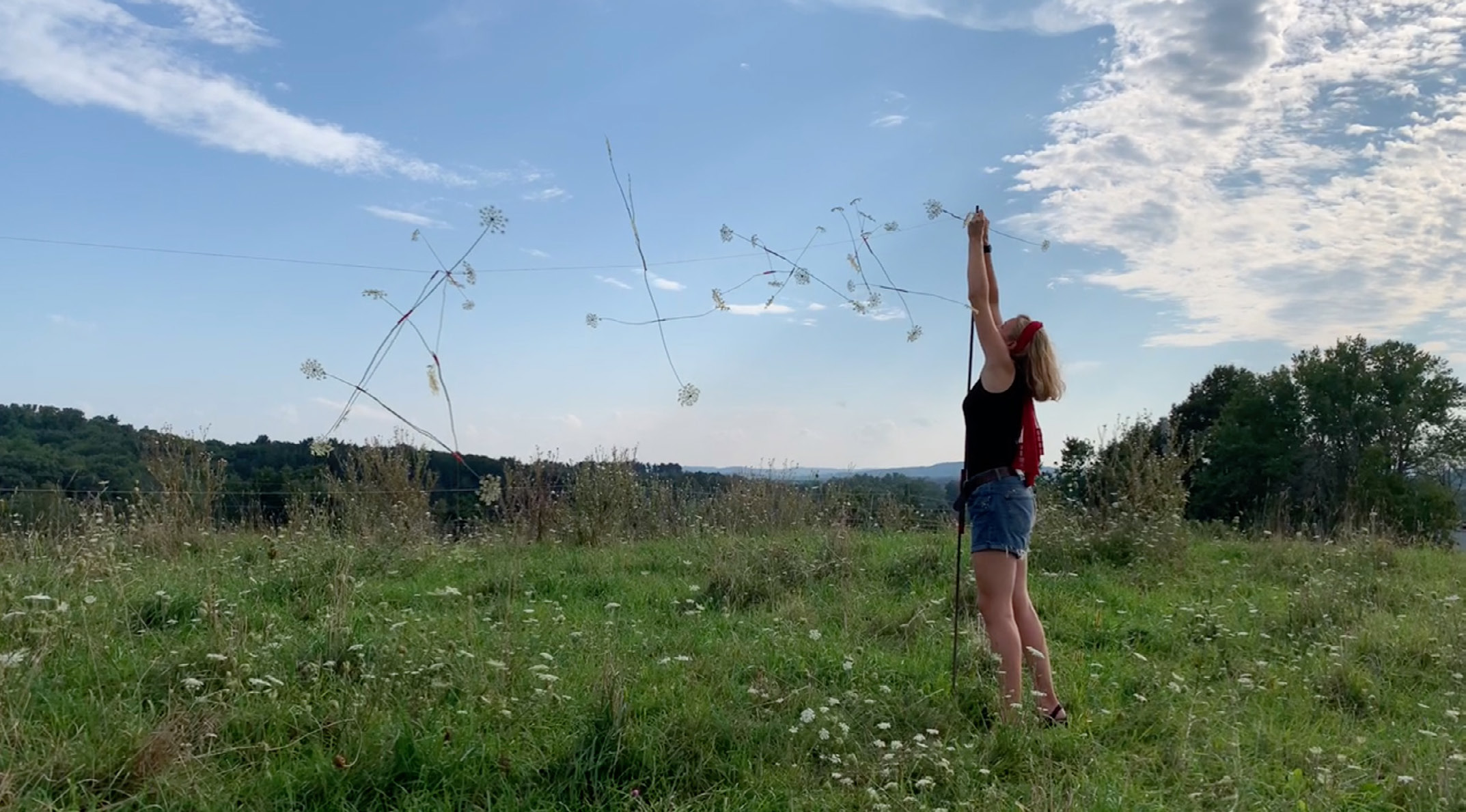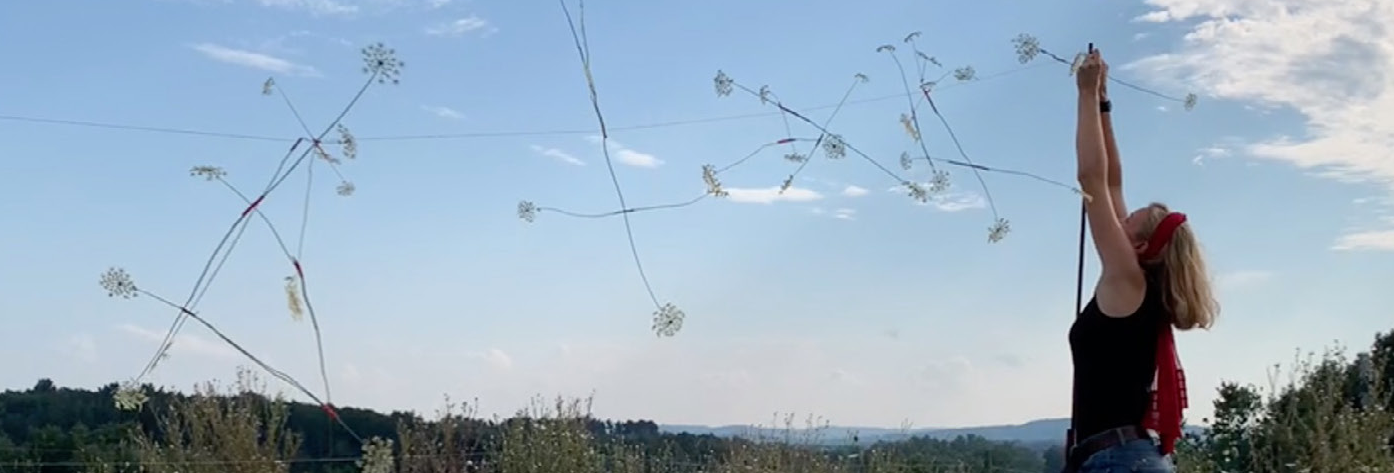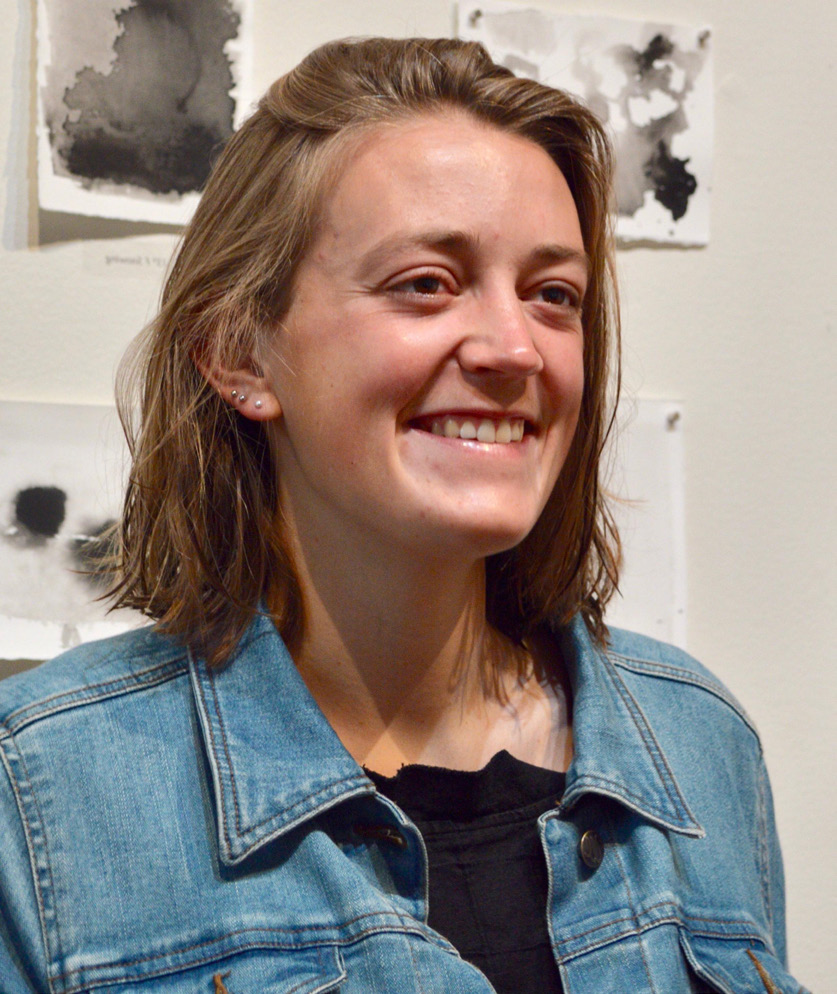Queen Anne’s lace is ubiquitous in the Midwest, nodding in the breeze along nearly every roadway and trail, sprouting among the other prairie flowers so prolifically that one could be forgiven for thinking it’s always been there. However–as any prairie restorationist will tell you–it’s an invasive species, introduced as an ornamental by European settlers decades ago. But while prairie gardners might want to eradicate it, artist Hannah Taylor has found a reason to celebrate it, making it the subject of an art installation she created during her time as artist-in-residence at the Wormfarm Institute.
Taylor hung her installation on the top of a hill in the Driftless Area of Wisconsin on August 28, 2021. She began pressing the wild carrot a week before installing the piece, which only remained on the hill for a few hours, long enough for Taylor’s videographer, Madigan Burke, to capture the finished project as it danced in the wind.
Daucus carota
Wild carrot, also known as Queen Anne’s Lace, continues to enchant me. I’m interested in plants that grow in spaces that cannot be categorized as natural or manufactured, and in how this plant life interacts with human life. During my residency at Wormfarm Institute, Wild carrot has greeted me in the morning when I walk outside. I look up to the hillside and see the light coming through all of its faces. I see wild carrot along the roadsides, especially on the road where I have to go to take phone calls. I see it lining the edges of forests and nesting in pockets of land between cornfields.
Daucus carota is ecologically invasive. Looking around, this makes sense. There is a certain overwhelming strength to it, a hardiness. At the same time, I find it full of eloquence.
Since the flowers only stay pressed for about a day before they begin to fold, I wrapped and balanced the plants during the morning leading up to the installation. After drying and pressing dozens of the flowers, I carefully picked up two at a time and wrapped the parallel stems together with thread. With this done, I took two more and overlapped them across the existing pair, making an X. I have to balance the thickness of the stems and the weight of the intricate flowers, adjusting the pairs by sliding them up and down the stems. I don’t tie the thread, but instead I pin it between the sturdy stems once they are wrapped. I make these mobiles as mechanisms to celebrate these delicately strong plants.

I wrote the following poem when I first climbed up the hill on which I installed the mobile, on August 7th, 2021:
I sit on a hill with wild carrot
The white flowers turn their faces to the sky
They play on this hill, layers and layers
Swaying in the wind
Welcome
Come and sit with us. Turn your face to the sky
To follow the breeze
To surround yourself with the density of being alive. 

